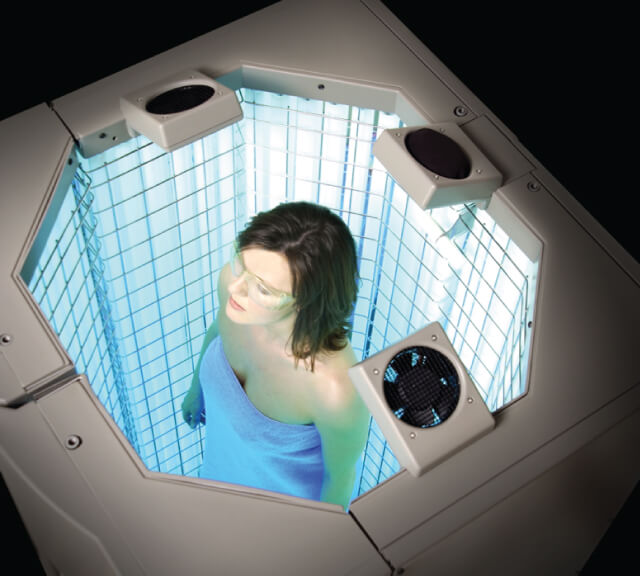Harnessing the Potential: Photobiomodulation's Role in Cells Regrowth
Wiki Article
Checking Out the Efficiency of Photobiomodulation Treatment in Mental Health
Have you ever before wondered if there is a brand-new, cutting-edge treatment that could potentially transform the area of psychological health and wellness? Well, look no more! In this exploration, we look into the globe of photobiomodulation treatment and its effectiveness in dealing with mental wellness problems. This advanced treatment, commonly referred to as PBM, uses particular wavelengths of light to stimulate mobile activity and advertise healing. While initially created for tissue repair, current studies have highlighted its potential advantages in psychological health, specifically in handling depression and anxiousness conditions. By losing light on this arising area, we aim to reveal the encouraging effects of photobiomodulation treatment and its prospective to change the method we come close to mental health therapy.The Science Behind Photobiomodulation Therapy
To understand the efficiency of photobiomodulation therapy in mental health, it is crucial to dive into the underlying clinical principles that drive this ingenious treatment strategy. Photobiomodulation therapy, additionally known as low-level light treatment, includes the usage of certain wavelengths of light to stimulate mobile feature and advertise recovery in the body.Additionally, photobiomodulation therapy has been found to have neuroprotective results. It can enhance the production of neurotrophic variables, such as brain-derived neurotrophic element (BDNF), which promote the development and survival of nerve cells. This stimulation of neurotrophic elements can assist regrow and repair harmed neurons, potentially bring about enhanced cognitive feature and psychological health and wellness end results.
Additionally, photobiomodulation therapy has actually been revealed to lower inflammation in the mind. By regulating the inflammatory action, it can minimize the harmful effects of neuroinflammation, which has been implicated in the growth of numerous mental health and wellness disorders. Additionally, this treatment can enhance blood flow and oxygenation in the mind, boosting total brain feature.
Potential Advantages of Photobiomodulation Therapy
Currently let's dig into the possible advantages that photobiomodulation therapy uses in improving mental health. Photobiomodulation therapy, likewise understood as low-level light treatment, has shown assurance in dealing with various mental health problems.Furthermore, this treatment has likewise been located to improve cognitive function. Research study has revealed that photobiomodulation treatment can improve mind function by boosting blood circulation and oxygenation in the brain. This can result in enhanced memory, interest, and overall cognitive efficiency. In addition, photobiomodulation therapy has been revealed to have neuroprotective impacts, meaning it can aid safeguard and fix harmed brain cells. This is specifically beneficial for people with neurodegenerative problems such as Alzheimer's illness.

Photobiomodulation Treatment and Clinical Depression
One major benefit of photobiomodulation treatment is its capacity to significantly decrease symptoms of depression (photobiomodulation therapy). Clinical depression is a common mental health condition defined by consistent sensations of despair, loss of passion or satisfaction in daily activities, and changes in hunger and sleep patterns. Conventional therapy alternatives for depression consist of medicine and psychotherapy, yet photobiomodulation treatment uses an encouraging option
Photobiomodulation therapy involves the usage of low-level light therapy to promote cellular function and advertise healing. The treatment works by raising blood flow and oxygenation to the brain, which can improve state of mind and decrease depressive signs. Study studies have revealed that photobiomodulation treatment can efficiently relieve signs and symptoms of clinical depression, including reduced state of mind, exhaustion, and absence of motivation.
One research published in the Journal of Affective Disorders found that individuals that obtained photobiomodulation treatment experienced a substantial decrease in depressive signs contrasted to those who obtained a placebo treatment. Another research published in the Journal of Clinical Psychiatry revealed that photobiomodulation treatment worked in minimizing signs of clinical depression in people with treatment-resistant depression.
Photobiomodulation Therapy and Anxiety Conditions
There are a number of means in which photobiomodulation therapy can successfully alleviate signs of anxiousness disorders. By boosting the why not find out more degrees of these neurotransmitters, photobiomodulation therapy can aid to stabilize the mind chemistry and alleviate anxiety symptoms. In general, the use of photobiomodulation therapy in the therapy of anxiousness disorders shows encouraging outcomes in reducing symptoms and improving the top quality of life for people having a hard time with stress and anxiety.Future Research Study and Implications
To further explore the efficacy of photobiomodulation therapy in mental health, future research should concentrate on its lasting results and prospective applications in various psychological disorders. While the present evidence recommends encouraging cause lowering signs and symptoms of stress and anxiety, depression, and cognitive decrease, it is crucial to explore the sustained advantages of this therapy over an extensive duration. Long-lasting studies could help figure out whether the positive results continue past the treatment period and whether the treatment can prevent relapse or reappearance of signs.In addition, future research study needs to aim to examine the possible applications of photobiomodulation therapy in various other psychiatric problems such as schizophrenia, bipolar affective disorder, and trauma. Checking out the efficiency of this treatment in diverse psychological health and wellness conditions would supply a much more comprehensive understanding of its healing capacity Full Report and increase its professional utility.
In addition, it would certainly be useful to explore the optimal treatment specifications for photobiomodulation therapy. pbm therapy. This includes identifying the suitable dose of light, the period and frequency of sessions, and one of the most effective wavelengths for different psychological health conditions. Recognizing these criteria would certainly aid maximize the therapeutic results and make certain standard protocols for clinical method

Conclusion
To conclude, photobiomodulation treatment shows pledge as a potential therapy for psychological health and wellness problems such as depression and anxiousness. The science behind this therapy suggests that it can successfully modulate brain activity and advertise neuroplasticity. While more research is required to completely understand its efficiency, the the original source prospective advantages it uses make it an exciting location of investigation for future mental wellness treatments.Photobiomodulation treatment, likewise understood as low-level light treatment, includes the use of specific wavelengths of light to boost mobile feature and advertise recovery in the body. Photobiomodulation treatment, likewise understood as low-level light therapy, has shown pledge in dealing with numerous psychological health and wellness problems.Photobiomodulation therapy includes the usage of low-level light treatment to boost mobile function and promote healing.To additionally check out the effectiveness of photobiomodulation treatment in psychological wellness, future research ought to concentrate on its long-term results and potential applications in numerous psychological disorders.In conclusion, photobiomodulation therapy reveals pledge as a potential therapy for mental health and wellness disorders such as anxiety and anxiousness.
Report this wiki page